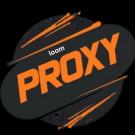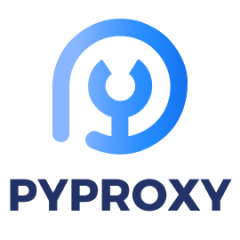All Activity
- Today
-
👙 What do you get when you mix Adult content, roulette, and AI? You get Lucky Lace - a game that's already gaining traction in Instagram Reels and pulling in 100k+ views in the Indian market 🇮🇳 This is a roulette adaptation where instead of a wheel - there are AI girls, and instead of numbers - lace colors. Unique gameplay, low competition, and high virality. We break down the gameplay, show working creatives, and share our research on this game 👇 ➡️ Read: Lucky Lace Review - New Adult Casino Roulette from EEAI The game just launched and is currently available in limited casinos. We're hoping for major brand integrations soon, as the concept shows serious potential. #games | Magic Click Partners
-
The story of one guy and his bans Once upon a time, there was a guy He decided to make some money — create a hundred accounts, launch ads, and test his hypothesis But the Internet said: “You look suspicious!” — and banned everything. Even his cat 🐈⬛ He cried, suffered, googled “how not to get banned”... And suddenly — he found CyberYozh App Mobile Shared Proxy. ⚡️ Now he has: Mobile IPs like real people, Auto IP rotation, Zero bans, And a nice price — because it’s shared Now this guy isn’t afraid of the Internet anymore He only fears one thing: losing Wi-Fi 😎 Try it yourself!
-
Larue Witting joined the community
-
I tried it mainly for backlink tracking, and it does a decent job there. The rank tracking part was okay, though took a while to run on bigger sites. One thing I noticed is its reports help me spot content gaps, which I’m using more now for answer engine optimisation instead of just regular SEO. That shift’s been getting me better placements in featured snippets.
-
I’ve had decent results using it, but the interface feels a bit clunky sometimes. The updates can be slow too, which messes with rank tracking on fast-moving keywords.
-
Now you can order email campaigns to your databases. We send from servers and corporate emails, with a speed of up to 20,000 emails per hour and an inbox rate of up to 90% for any service. We also send campaigns to WhatsApp, Viber, Telegram, and direct SMS! Don't waste time, reach out to your contacts! TG bot: https://t.me/Raccoonstockbot Channel: https://t.me/RaccoonStock Contact: https://t.me/changreta
-

official Domain Days Dubai 2025 - October 22 & 23, 2025, Dubai
Loom Proxy replied to Daniel's topic in Conferences & Events
Wish to be there -
FoundRecovery joined the community
-
MonetizeBetter would like to wish all members celebrating their birthday today a happy birthday: TM Naturals (23)toprops (26)seemav11 --Teephe --,
-
NielsenIPLegal joined the community
-
#EducationSeries #Ethereum Today’s lesson takes us back to the fundamentals. The emergence of Ethereum stands as one of the most significant milestones in blockchain history — it ushered the technology into the era of smart contracts. In other words, the vibrant ecosystem we see today all began with Ethereum and its smart contract innovation. If Bitcoin is “digital gold,” then Ethereum is the “operating system of the digital world.” It not only upgraded blockchain from a “ledger system” to a “programmable network” but also sparked the birth of entire industries: DeFi, NFT, DAO, GameFi, and beyond. Without Ethereum, there would be no Web3 as we know it. From Bitcoin to Ethereum: The Second Awakening of Blockchain In 2015, a 19-year-old Canadian programmer named Vitalik Buterin (V God) introduced the concept of Ethereum. He believed that while Bitcoin solved the problem of decentralized money, it couldn’t handle more complex logic or applications. So he imagined a new kind of blockchain — one that could not only store value but also execute code. This was Ethereum’s greatest innovation: the smart contract. In traditional Internet systems, trust depends on intermediaries — banks, companies, platforms. But on Ethereum, trust is written into code. Smart contracts can automatically execute trades, distribute rewards, enable voting, and manage governance — all without a middleman. From that moment, blockchain evolved from a “financial instrument” into a network of value. Smart Contracts: Turning Trust into Code The concept of smart contracts was first proposed in the 1990s by computer scientist Nick Szabo, but it wasn’t until Ethereum that it became reality. Before Ethereum, blockchains were merely digital ledgers — able to record transactions but unable to act. Smart contracts gave blockchain its agency — no longer just recording, but executing logic, triggering rules, and building decentralized ecosystems. Simply put: Smart Contract = “If A happens, automatically execute B.” For example: If an NFT is purchased → automatically transfer tokens to the seller. If a user stakes ETH for a certain period → automatically distribute rewards. If a proposal passes community voting → automatically trigger governance actions. It works like a vending machine — once you insert a coin, the machine automatically dispenses the product. No one can interfere, and no one can default. More importantly, the machine’s rules are public and transparent — anyone can audit the source code to verify fairness. This embodies the principle of “Code is Law.” Once deployed on-chain, no one can alter it. This makes smart contracts “trustless yet more trustworthy.” Developers use the Solidity language to write these contracts on Ethereum, creating a vast world of DApps (Decentralized Applications) — spanning finance, gaming, governance, and art. Uniswap’s automated market maker, Aave’s lending protocol, Curve’s stablecoin exchange — all powered by smart contracts. For users, a smart contract is a black box of trust — you don’t have to trust who’s on the other side, only that the contract works. For developers, it’s a tool of productivity — converting business logic directly into automated rules. No supervision, no arbitration — the blockchain itself becomes the judge. That’s why Ethereum is often called the “World Computer.” It’s not just a network but a distributed supercomputer anyone can access and audit. Every smart contract is a “program” on this computer. Every transaction is a “computation.” Smart contracts aren’t an add-on feature — they are the soul of the Ethereum ecosystem. They transformed blockchain from a “decentralized ledger” into a decentralized operating system — the very foundation of Web3. Ethereum’s Technical Structure: From Accounts to the Virtual Machine To understand Ethereum’s power, we need to grasp its key components: 1. Account Model Unlike Bitcoin’s UTXO model, Ethereum uses an account-based system, divided into: EOA (Externally Owned Account): controlled by private keys; Contract Account: controlled by smart contract code. This design enables greater flexibility — accounts can not only transfer value but also interact with smart contracts. 2. EVM (Ethereum Virtual Machine) The EVM is Ethereum’s core brain — the execution environment for all smart contracts. It defines how programs run, how resources are billed, and how errors are handled. Every contract execution consumes Gas, Ethereum’s resource metering unit. Gas prevents abuse and ensures that every on-chain action carries a cost. The more complex the operation, the more Gas it consumes — pushing developers to optimize for efficiency. 3. Gas Mechanism & Transaction Fees Gas represents the computational cost of transactions. Fees are calculated as: Total Fee = Gas Limit × Gas Price (in Gwei) (1 Gwei = 0.000000001 ETH). This mechanism filters spam transactions and maintains network efficiency. 4. From PoW to PoS: Ethereum’s Great Migration Initially, Ethereum used Proof of Work (PoW) like Bitcoin. But as the network expanded, energy consumption became a growing concern. Then came The Merge — the historic upgrade that transitioned Ethereum from PoW to PoS (Proof of Stake). In PoS, validators don’t mine using power-hungry hardware — they stake ETH to secure the network. This shift reduced energy usage by 99.95%, while enhancing both security and decentralization. The Merge marked the dawn of blockchain’s green era. The Rise of Layer 2: Unlocking Scalability Ethereum’s biggest challenges have always been speed and cost. On-chain operations are expensive; even a basic transfer can cost several dollars, and during DeFi booms, Gas fees were unbearable. That’s where Layer 2 (L2) solutions came in. Core logic: Treat Layer 1 as the settlement layer, Layer 2 as the execution layer, Let the main chain stay secure while L2 handles throughput. Think of it as Ethereum’s “express highway.” Computations and transactions happen off-chain on Layer 2, while only the results are finalized on the mainnet. This drastically reduces congestion without compromising decentralization. Main Layer 2 Approaches: Optimistic Rollups (e.g., Optimism, Arbitrum) Assume transactions are valid unless challenged. High throughput, low cost — ideal for active DeFi/NFT use. ZK Rollups (e.g., zkSync, StarkNet) Use zero-knowledge proofs to verify correctness without re-execution — balancing efficiency and security. Often seen as the ultimate form of L2 scaling. Validium / Plasma Early off-chain storage models with on-chain validation, now largely replaced due to weaker data availability. Layer 2 isn’t just a technical upgrade — it’s an economic revolution. It democratizes Ethereum, making microtransactions, games, social apps, and payments feasible for everyone. And the competition among L2s continuously fuels Ethereum’s innovation — from “single-chain bottleneck” to “multi-chain parallelism,” from high-Gas pain to “pennies per transaction.” Today, many DeFi and GameFi booms start not on the mainnet but on Layer 2. In short: Layer 2 isn’t an accessory — it’s Ethereum’s future self, the key to becoming the world’s true decentralized operating system. Ethereum Standards: The Language of ERC Ethereum’s strength also lies in its open standardization system — ERC (Ethereum Request for Comment). These standards define how developers build assets, protocols, and governance systems on the network. Common standards include: ERC-20: Fungible token standard (e.g., USDT, UNI) ERC-721: Non-fungible token standard (NFTs) ERC-1155: Hybrid multi-asset standard ERC-4626: Yield-bearing asset interface Thanks to ERCs, projects across Ethereum “speak the same language,” enabling seamless interoperability and rapid ecosystem expansion. Conclusion Ethereum has never been just a blockchain — it’s a philosophy. It stands for openness, transparency, and programmability. In its ecosystem, anyone can build their own world with just a few lines of code. As Vitalik Buterin said: “We are rewriting trust with code, and reshaping the world through decentralization.” That is the true meaning of Ethereum — not an endpoint, but the starting point of every Web3 dream. Appendix: Ethereum Quick Reference Glossary EVM — Ethereum Virtual Machine Gas — Computational cost of executing transactions Gwei — Unit of Gas price (1 ETH = 1⁰⁹ Gwei) Solidity — Ethereum’s smart contract programming language ABI — Application Binary Interface for contracts PoW — Proof of Work consensus mechanism PoS — Proof of Stake consensus mechanism The Merge — Ethereum’s transition from PoW to PoS Validator — Node verifying and proposing blocks Staking — Locking ETH to participate in validation Rollup — Layer 2 scaling technology ZK-SNARK — Zero-Knowledge proof protocol Sharding — Data partitioning for scaling DAO — Decentralized Autonomous Organization Layer 2 — Off-chain scaling network Mainnet — Ethereum’s primary network DApp — Decentralized Application Beacon Chain — Ethereum’s PoS consensus chain
-
#Solana #Saga #Web3Phone Since the iPhone ushered in the smartphone era, mobile ecosystems have grown ever richer — gradually folding in the wallet, browser, calculator, computer, and payments — becoming a compendium of functions from many domains. The convenience phones bring to daily life is obvious to all. At this point, many started to wonder whether crypto and blockchains could enter everyday hardware ecosystems. From wallets, browsers, and smart contracts to embedding crypto elements directly into the phone, an impatient yet ambitious experiment emerged: the Web3 phone. These devices carry the vision of “bringing blockchain into daily life” — with built-in crypto wallets, preloaded token airdrops, dApp entry points, and freedom from traditional app-store gatekeeping. Yet when ideals meet reality, deeper issues in technology, markets, governance, and security are exposed. Recently, the end of support for Solana Saga became a landmark event in Web3 phone history. Just two years after launch, the device has “reached its end,” and the reasons and lessons behind that deserve serious reflection. This article starts from the development arc of Web3 phones, analyzes Saga’s rise and fall, and then examines from an industry perspective: why has this track repeatedly been “brimming with ambition” yet “delivering modest returns”? Can Web3 phones reboot? And what does this mean for brands, developers, and users? The Vision of Web3 Phones and Three Development Stages As we noted at the outset, “the phone” is an indispensable portal for modern life. Images, finance, social, gaming, payments — nearly all digital life gathers in a pocket-sized device. The blockchain community recognized early on: if decentralized asset management, secure wallets, identity, and cross-chain interactions could be built into phones, then Web3 could reach ordinary users and move from “within the circle” to “within daily life.” Thus, the Web3 phone vision can be summarized in three points: Native wallet and self-custody — users own their private keys, without intermediaries. dApp ecosystem entry — the phone is not just a browser, but an on-chain application portal. Escape from traditional app-store constraints — remove potential risks of fees, review, and de-listing by platforms. Against this backdrop, Saga and more than a dozen so-called “crypto phones” followed. From hardware partnerships, preinstalled wallets, and airdrop incentives to on-chain identity binding, they shone brightly. But beyond the vision lurked layered challenges in ecosystems, business models, technology, and regulation. Phase One: Exploration (Web3 Phone 1.0 Representatives) — HTC Exodus and Sirin Labs Finney To talk about Web3 phone 1.0, we have to go back to around 2018, when a crypto wave was just beginning and some hardware makers were first to spot the opportunity. Two of the most representative: 1) HTC Exodus (2018) From the former Android heavyweight HTC came a bold attempt. Built-in cold wallet “Zion Vault,” supporting BTC, ETH, and other majors. The main selling point was “blockchain security,” emphasizing user-held private keys. Sales weren’t hot; according to HTC execs, first-year volume was under 100,000. Core failure reason: immature on-chain app ecosystems and high user education costs. 2) Sirin Labs Finney (2018) Raised over $100M to build, running SIRIN OS with direct dApp support. Likewise featured a hardware wallet and token payment functions. Ultimately couldn’t escape “cash-grab” doubts — after a brief spike, it faded quickly. Summary: This stage was more like “proof-of-concept” devices, proving “phone + blockchain” could be built and used. Unfortunately, the market wasn’t ready and users didn’t quite get it. Phase Two: Practical Transition (Web3 Phone 2.0 Representatives) — Solana Saga, Binance Mini Phone, etc. By 2022–2023, the landscape began to change. The crypto ecosystem had matured far beyond five years prior — NFT booms, DeFi’s move toward mainstream, USDT’s global circulation — making Web3 phones look less like “niche toys.” 1) Solana Saga Officially launched by Solana Labs, aiming to be “Solana’s mobile gateway.” Shipped with Solana Mobile Stack (SMS), letting developers run dApps on the phone more easily. Built-in Seed Vault secure module for OS-level key management. Priced at $999, initial reception was lukewarm, but later, thanks to BONK giveaways, NFT airdrops, and other “benefit strategies,” it unexpectedly took off; secondary prices once climbed above $3,000. It clearly boosted the ecosystem and energized a wave of “mobile-first” crypto projects. Phase Three: Modularization, AI Integration, and Strong DID — Toward a 3.0 Web3 Phone In 2025, Web3 phones finally reached a 3.0 stage. The focus is no longer “bundling crypto tools,” but building a composite platform that serves as a decentralized identity terminal + an autonomously running node + an AI strategy module, truly fusing on-chain identity + on-chain assets + on-chain compute. Users aren’t merely “visitors” to the crypto world; they become part of the ecosystem — potentially even the primary beneficiaries. Three Structural Factors Behind Web3 Phone Failures or Bottlenecks From the Saga case, we can see these devices face multiple constraints: 1)Hardware and Supply-Chain Cost Challenges Creating a phone entails heavy costs in design, manufacturing, certification, logistics, and after-sales. Web3-specific needs (wallet security, preinstalled cold storage, chain compatibility) raise the bar further. If sales volume is insufficient, costs can’t be amortized. Saga’s price cuts and speculative resale signal a mismatch between demand and cost. 2) Ecosystem Entry Still Isn’t Mainstream Even with preinstalled wallets and crypto connectivity, mainstream users’ awareness and usage of crypto assets remain marginal. Without mainstream apps or convenient scenarios, the phone itself struggles to become a “must-have.” Moreover, traditional ecosystems are dominated by App Store/Google Play; if Web3 devices can’t offer a superior alternative experience, user migration willingness is limited. 3)Lifecycle and Security Trust Issues Phones are a long-term hardware commitment. Users expect years of updates, security patches, and ecosystem support. If Web3 phones have very short support cycles, lightweight ecosystems, and thin after-sales, users will perceive them as “experimental gear,” making broad trust hard to earn. Saga’s two-year support cycle directly broke that promise. Despite Current Bottlenecks, the Track Still Holds Potential Value Future Paths and Optimizations 1)Focus on Real User Scenarios, Not Just Airdrop Lures Next-gen devices should place more emphasis on blending “crypto + everyday phone”: on-chain identity login, NFTs as contacts, the wallet as payments, and a portal for on-chain gaming. If users can switch seamlessly and with strong convenience, then mass appeal becomes possible. 2)Extend Support Cycles and Strengthen Security Guarantees Hardware lifespans, system updates, and ecosystem compatibility must at least keep pace with mainstream Android devices (5+ years). Otherwise, switching costs are too high for users. 3)Open Ecosystems with Multi-Chain Support They shouldn’t be limited to a single chain. Devices that support multiple chains, cross-chain assets, and decentralized app stores will reach a broader audience. 4)Partner with Mainstream Phone Brands/Carriers If Web3 phones can launch in partnership with major brands/carriers, distribution, after-sales, and trust improve. Make crypto functions part of flagship phones instead of “starting from scratch.” 5)Innovate Hardware Cost Recovery Models Preinstalled wallets, airdrops, co-issued tokens, and on-chain identity rewards can subsidize hardware costs — but the key is long-term ecosystem value, not one-off hype. Conclusion: Web3 Phones Aren’t a Scam, but Hype Can’t Be the Strategy While Saga’s end-of-support looks like a “failure,” we shouldn’t view it as the definitive failure of Web3 phones. It’s more of a dress rehearsal — a reminder that stacking hardware with blockchain isn’t a shortcut to success. For Web3 phones to succeed, they must plant their feet firmly on generality, entry-point value, and ecosystem continuity. If they can achieve daily user willingness to use, continuous on-chain value accrual, and a healthy hardware cost model, then “Web3 phones” will have the right to become the next-generation computing portal — and not just a passing crypto fad.
-

Need a dedicated server for my online shop
Littnano replied to Sovegeko's topic in Hosting & Domain Providers
Transferred all my sites to GTHost.com and no regrets! The price is outstanding for the features provided, nice control panel with a load of features. I am continually impressed by their ability to provide dedicated hosting solutions that not only meet but exceed industry standards, ensuring clients maintain a strong digital presence. -
Dinos Vietnam Launches a Series of New Financial Campaigns in the Philippines! 💼 Finapps_CPQL_PH Finapps is a trusted online lending platform that helps customers access loans quickly and easily—without complicated paperwork. With a long-standing reputation in the Philippines and strong credibility in the financial sector, Finapps consistently ranks among the top campaigns with stable approval rates and high-quality traffic. 💰 Commission: 47,200 VND 🔗 View campaign details: https://account.dinos.vn/offers/detail/744 💼 Cashspace_CPQL_PH Cashspace is a reliable loan comparison platform that allows customers to find the most suitable loan package within just a few minutes. This campaign is favored by many publishers thanks to its high approval rate, stable customer data, and ability to deliver consistent, long-term conversions. 💰 Commission: 40,000 VND 🔗 View campaign details: https://account.dinos.vn/offers/detail/582 💼 PeraMuning_CPQL_PH PeraMuning offers a fast, simple, and secure loan experience—ideal for customers seeking instant disbursement. With an automated and transparent review system, this campaign allows publishers to easily test traffic and achieve positive results right from the start. 💰 Commission: 40,500 VND 🔗 View campaign details: https://account.dinos.vn/offers/detail/1186 —————————— DINOS VIETNAM – THE TRUSTED NETWORK 🌐 Website: https://dinos.vn/ ☎ Hotline: +84 24 6652 6960 🏢 Address: Tower A, 2nd Floor, No. 69 Vu Trong Phung Street, Thanh Xuan District, Hanoi, Vietnam
-
Laucharge - Payment processing for all High risk merchants
WyattFlores46 replied to Laucharge's topic in Financial services
Thanks for the information, click here to see my review. -
WyattFlores46 joined the community
-
Hosting Solutions LLC is the owner of the CentoServer brand and is one of the leading web hosting companies. We have been involved in web hosting and domain registration services since 2002. The primary goal of our company is to present ourselves in the market with competitive prices, and reliable, high-quality, and secure web hosting service. Hosting Solutions LLC is not a web hosting reseller! We own our own data center located in Europe. Direct optical links to all major Internet providers, a redundant network based on Cisco equipment, redundant power supply, redundant cooling system, top-of-the-line DELL PowerEdge and HPE ProLiant server series, L3+L4 DDoS protection, and always available technical support put us ahead of the competition, and guarantee our customers a quick response and maximum availability of the services they host with us. CentoServer currently provides services to 10000+ satisfied customers. The services we offer: Shared Web Hosting, Reseller Hosting, Virtual Private Servers, Dedicated Servers, Shoutcast Hosting, SSL Certificates, Domain Registation. Are you interested in High End Dedicated Server Hosting Services? Explore the top-notch performance of our premium Dell PowerEdge and HP ProLiant Dedicated Servers. Designed for demanding business applications, these servers provide outstanding reliability, scalability, and security. Regardless of the size of your business, our Dedicated Servers can take your online operations to a new level. With our 24/7 support and guaranteed availability, your online presence will always be seamless. All prices listed below include a 35% discount for the first 3 months of service usage! Take a look at Centoserver Entry-level Dedicated Servers: DELL i5-8500 1 x 6 Core i5-8500 CPU clock - 6 x 3.0 GHz RAM 8 GB DDR4 960 GB (2 x 480 GB SSD) Bandwidth Unlimited 1 Gbps Price: $72.80/monthly - ORDER NOW DELL i7-8700 1 x 6 Core i7-8700 CPU clock - 6 x 3.2 GHz RAM 12 GB DDR4 1.92 TB (2 x 960 GB SSD) Bandwidth Unlimited 1 Gbps Price: $54.35/monthly - ORDER NOW DELL PowerEdge R320 1 x 6 Core Xeon E5-2420v2 CPU clock - 6 x 2.2 GHz RAM 32 GB DDR3 1.92 TB (2 x 960 GB SSD) Bandwidth Unlimited 1 Gbps Price: $77.35/monthly - ORDER NOW DELL PowerEdge R320 1 x 8 Core Xeon E5-2450v2 CPU clock - 8 x 2.5 GHz RAM 32 GB DDR3 1.92 TB (2 x 960 GB SSD) Bandwidth Unlimited 1 Gbps Price: $83.85/monthly - ORDER NOW DELL PowerEdge R320 1 x 10 Core Xeon E5-2470v2 CPU clock - 10 x 2.4 GHz RAM 32 GB DDR3 1.92 TB (2 x 960 GB SSD) Bandwidth Unlimited 1 Gbps Price: $90.35/monthly - ORDER NOW DELL PowerEdge R630 1 x 10 Core Xeon E5-2640v4 CPU clock - 10 x 2.4 GHz RAM 64 GB DDR4 1.92 TB (2 x 960 GB SSD) Bandwidth Unlimited 1 Gbps Price: $128.05/monthly - ORDER NOW DELL PowerEdge R630 1 x 14 Core Xeon E5-2680v4 CPU clock - 14 x 2.4 GHz RAM 64 GB DDR4 1.92 TB (2 x 960 GB SSD) Bandwidth Unlimited 1 Gbps Price: $142.35/monthly - ORDER NOW You can also check out Centoserver Server Performance Series: Premium DELL PowerEdge & HP ProLiant servers with two or more multi-core processors HP ProLiant DL360e G8 2 x 10 Core Xeon E5-2470v2 CPU clock 20 x 2.4 GHz RAM 32 GB DDR3 Datacenter Edition 1.92 TB (2x960 GB SSD) Bandwidth Unlimited 1 Gbps Price: $152.10/monthly - ORDER NOW DELL PowerEdge R630 2 x 14 Core Xeon E5-2680v4 CPU clock - 28x2.4 GHz RAM 64 GB DDR4 Datacenter Edition 1.92 TB (2x960 GB SSD) Bandwidth Unlimited 1 Gbps Price: $187.20/monthly - ORDER NOW DELL PowerEdge R820 4 x 10 Core Xeon E5-4650v2 CPU clock - 40x2.40 GHz RAM 64 GB DDR3 Datacenter Edition 1.92 TB (2x960 GB SSD) Bandwidth Unlimited 1 Gbps Price: $358.80/monthly - ORDER NOW List of available operating systems for dedicated servers: AlmaLinux, Debian, Ubuntu, Windows, CentOS, FreeBSD. Contact information: E-mail: support@centoserver.com Phone: +1-702-323-3844 Not sure which plan is best for you? No problem. Send us a ticket with your questions and we’ll get back to you with a quote. Free of charge.
- Yesterday
-
🔥 TOP PROXIES OF THE WEEK 🔥 Every week, we pick the most reliable, fastest, and most stable ones — those who’ve rightfully earned their spot among the leaders. This week’s top performers: 🇻🇳 VN Zenlayer (Residential) — Vietnam holds strong in the top ranks: rare IPs and rock-solid uptime. 🇪🇸 ES Lietpark Communications (Residential) — Spain delivers excellence: clean IPs and a high trust level. 🇷🇺 RU Lietpark Communications (Residential) — Time-tested Russian proxies with flawless stability. 🇺🇸 5G Colorado Denver Unlimited T-Mobile (Mobile) — Denver leads again: speed and reliability worthy of a champion. 🇺🇸 US Cogent (https://app.cyberyozh.com/proxy/residential/?utm_source=forum#proxy-25db956b44754e46aaf359d3c3b8e139) (Residential) — The American powerhouse with an ideal balance of performance and stability. ⚡️ These proxies pushed the limits this week and truly earned their place in the ranking Check them out now — only top-tier solutions from CyberYozh App 😎
-
Utilities Vertical: a Detailed Overview and Tips for Advertisers Utilities is one of the most stable and profitable verticals in traffic arbitrage. In our fresh article, we take a detailed look at this vertical, which offers to work with, and also provide recommendations for setting up advertising and creatives. You will also learn: - The importance of the Utilities & Software vertical in 2025. - Which offers in this niche are the most profitable. - How to properly set up targeting to get the maximum return. - Recommendations for creating effective creatives and landing pages. - Why you should work with push ads and which formats show the best results. Read the full article on our blog and learn how to effectively start driving traffic in EVADAV for this high-income niche.
-
Eine hochwertige Handelsplattform erkennt man nicht nur an ihren technischen Funktionen, sondern auch an dem Level an Unterstützung, den sie ihren Nutzern bietet. Die Klarlogik Trading Platform versteht, dass selbst die robusteste Technologie ohne effektiven Support ihren Nutzen verlieren kann, insbesondere für Benutzer, die neu im Handel sind oder bei technischen Problemen schnelle Hilfestellungen benötigen. Daher hat Klarlogik erheblich in ihren Kundenservice und Support investiert, um ihren Nutzern eine nahtlose und unterstützte Handelserfahrung zu ermöglichen Egal ob Tag oder Nacht, die globale Natur des Handels ruht nie. Deshalb ist es unerlässlich, dass der Kundensupport jederzeit verfügbar ist. Klarlogik bietet einen Kundenservice, der rund um die Uhr, sieben Tage die Woche erreichbar ist. Dies stellt sicher, dass Händler jederzeit Unterstützung erhalten können, unabhängig von ihrer Zeitzone oder den Handelszeiten. - Mehrere Kommuniationskanäle: Ob per E-Mail, Telefon, Live-Chat oder Social Media, Klarlogik hat es den Nutzern einfach gemacht, auf verschiedene Arten Hilfe zu bekommen. - Reaktionsfähigkeit: Die schnelle Antwortzeit des Support-Teams sorgt dafür, dass Probleme so schnell wie möglich gelöst werden, was den Nutzern eine reibungslose Handelserfahrung ermöglicht. Durch diese unermüdliche Unterstützung fühlen sich die Nutzer sicher und wissen, dass professionelle Hilfe nur einen Klick entfernt ist. Der ständige Zugang zu Hilfeleistungen stärkt das Vertrauen der Kunden in die Plattform und maximiert ihre Produktivität. UNSERE OFFIZIELLE WEBSITE https://www.kryptimes.com/216/klarlogik-review/
-
klarlogik joined the community
-

official Domain Days Dubai 2025 - October 22 & 23, 2025, Dubai
Daniel replied to Daniel's topic in Conferences & Events
Domain Days Dubai 2025 Welcome to #DomainDaysDubai We want to express our gratitude for your choice to be a part of Domain Days Dubai 2025. Your presence in Dubai and your commitment to making this event memorable and successful is greatly appreciated. This email contains all the important information that you need in order to have a productive experience at the event that starts tomorrow at 8am. Event Location: The event will take space at the Grand Ballroom area of the Marriott Resort, Palm Jumierah, Dubai on 22-23 October - 8am-6pm Directions: When entering the hotel via the main entrance, walk all the way to the right and go one level up using the escalators, you will then be at the event space foyer area and that's where our charming hostesses and the registration desk will be setup. The event takes place at the Grand Ballroom. If you are arriving by car, free valet parking is available. Please validate before leaving at the concierge desk. Badge Collection: The registration starts at 8:00am tomorrow and you will need to collect your badge form the registration desk by presenting your ticket QR code (found in the account section of the website and the app) or by simply saying your name. It will be sent to your email a few hours before the show. Wristband Collection (For VIP Yacht Cruise): If you are holding a VIP pass and opted for the VIP yacht cruise, the registration desk staff will also handover a wristband that is a MUST to have when going for us on the cruise. This is strictly non-transferable and cannot be replaced if lost. Agenda: Our agenda is now live and you can bookmark sessions that you wish to attend and read more about our speakers and the topics that will be covered. Hospitality: We will make sure that you will stay hydrated, caffeinated, and eat well during the 2 days of our event. Coffee Breaks: There are 2 coffee breaks with a splendid choice of cold & warm snacks with fresh juices, tea, local coffee with dates and healthy options too. Lunch: The Day 1 & 2 lunches are served at the Levantera restaurant on the ground floor. Identify yourself as a Domain Days attendee and you will be guided to our dedicated seating area. Please wear your badge! Day 1 Dinner: The official networking dinner (sponsored by Webpros & Atom) will be held on the 22nd of October, 7PM onwards at the Bal Harbour Beach restaurant. All food (fresh local grills), soft drinks, water and tea/coffee are included. P.S Alc. beverages are available at the cash bar - this is due to our respect for the local hosts and in line with traditions. Please wear your badge. Dress code: It's warm & humid these days, please feel free to wear casual! Day 2 VIP Cruise & Dinner: For our VIP pass holders, we will embark on a 4 hours cruise with unlimited F&B (soft & alco.) catered from a 5-stars venue onboard the Mega Yacht. Thanks to Domora by Freename & Nova Registry (.link) for sponsoring this. Dress code: Please wear light comfortable cloths, its a party after all! VIP Majlis (VIP Networking Lounge) is located at Palm room #6, across from the main event space and this is a quiet area for you to relax, schedule a meeting in a VIP style - Sponsored by OpusDNS See you tomorrow, on the 22nd of October 2025 at 8:00am for the registration & networking before our stage is set with our featured speakers & presentations, not to be missed! We have a large event photo/press wall - make sure to click some nice photos and share them on socials. Our official event hashtag is #domaindaysdubai. We also have a funky photobooth sponsored by .it.com Domains and roaming photographer/videographer on-site all days. New for 2025! We have setup a bespoke olfactory experience - a live booth where you can choose out of 10 popular and Middle Eastern inspired or build your own custom perfume with the help of a specialist and also get it in a custom bottle with your name engraved in English or Arabic! This is an exclusive gift from us to you! Make sure to create your own perfume - available in the exhibition area. Official Digital Asset Auction is done in partnership with RightoftheDot (ROTD). Please make sure to sign up to take part in this experience on Day 1 of the event. There will be members of the press and local newspapers in the room! Attendee List & Networking Full Event Agenda WhatsApp Group Google Maps Location Our Valued Sponsors -

guide How To Sell Your Amazon Affiliate Website for $190,000
Loom Proxy replied to Daniel's topic in Website Investors & Flippers
Sounds like a piece of cake, wish to be that easy as you explained










.png.7a878404593e171c1b2779be695aa44b.png)














